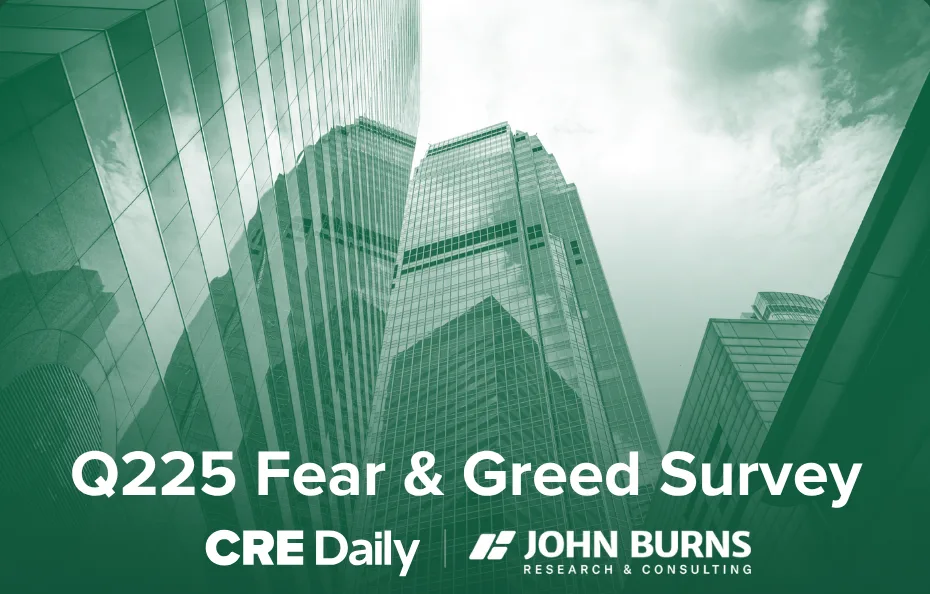In collaboration with
Fear & Greed Index
Conducted jointly by John Burns Research and Consulting and CRE Daily, the Fear and Greed Index examines current commercial real estate investor sentiment and expectations over the next six months, as well as changes in access to capital and asset values.
| Sectors | Rating |
|---|---|
| Multifamily | 59 |
| Industrial | 59 |
| Retail | 58 |
| Office | 48 |
| Sectors | Rating |
|---|---|
| Multifamily | 58 |
| Industrial | 60 |
| Retail | 56 |
| Office | 47 |
| Sectors | Rating |
|---|---|
| Multifamily | 62 |
| Industrial | 63 |
| Retail | 56 |
| Office | 36 |
| Sectors | Rating |
|---|---|
| Multifamily | 58 |
| Industrial | 57 |
| Retail | 55 |
| Office | 43 |
| Sectors | Rating |
|---|---|
| Multifamily | 54 |
| Industrial | 56 |
| Retail | 54 |
| Office | 42 |
| Sectors | Rating |
|---|---|
| Multifamily | 53 |
| Industrial | 56 |
| Retail | 53 |
| Office | 40 |
Sponsored by

InvestNext is an all-in-one real estate investment management platform that helps firms streamline capital raising, automate investor operations, and manage complex deal structures.
Industrial and Multifamily real estate are the strongest commercial sectors, per our sector-level Fear and Greed Index. Office continues to lag.
Current CRE Investment Strategy Index
This index gauges investor behavior in the most recent quarter by measuring the share of commercial real estate professionals who increased, decreased, or maintained their investment exposure across major asset classes. It provides a snapshot of real-time market positioning and indicates whether investors are leaning into growth opportunities or pulling back due to perceived risks.
Expected Investment Strategy Index
This forward-looking index captures investor expectations over the next six months, based on whether they plan to increase, decrease, or hold their exposure to various CRE sectors. It reflects evolving sentiment around market conditions, interest rates, and asset performance, offering early signals of potential capital shifts across the industry.
Access to Capital Index
This index measures changes in investors’ ability to raise debt or equity capital compared to the prior quarter. By tracking whether capital has become easier, harder, or stayed the same to access, the index highlights perceived liquidity in the market and helps gauge overall confidence in capital availability across CRE sectors.
Sector Breakdowns
Track sentiment, value trends, and capital access across Multifamily, Industrial, Retail, and Office. See where investors are buying, selling, or holding, with quarterly insights on confidence and pricing shifts.
Change in Values by Asset Class (% YOY)
Expected Change in Values by Asset Class (Next 6 Months)
Investment Strategy Trend
Capital Access Sentiment
Change in Values by Asset Class (% YOY)
Expected Change in Values by Asset Class (Next 6 Months)
Investment Strategy Trend
Capital Access Sentiment
Change in Values by Asset Class (% YOY)
Expected Change in Values by Asset Class (Next 6 Months)
Investment Strategy Trend
Capital Access Sentiment
Change in Values by Asset Class (% YOY)
Expected Change in Values by Asset Class (Next 6 Months)
Investment Strategy Trend
Capital Access Sentiment
Commentary from CRE investors
Unfiltered insights from the front lines, featuring direct quotes and key themes from commercial real estate professionals on interest rates, policy shifts, capital markets, and market outlook.
The CRE investment market continues to be somewhat stuck: sellers want the prices they could have gotten several years ago, and buyers aren’t willing to pay those prices. Lots of investors sitting on the sidelines watching.
It’s becoming a buyer’s market, and I’m seeing investors hold the line until some prices come down and the cost of capital is reduced.
I am optimistic but still remain cautious. I continue to make investments, but at or below minimums, and I am doing a truly deep and thorough level of due diligence that is at least 10 times more involved than it previously was…
In my opinion, a shakeout of marginal firms will increase in the near term.
I don’t believe we will see
any significant improvement
until rates come down and
lenders relax criteria.
I believe the extend and
pretend period is coming to
an end. [In] 6 months, the
collateralized loan obligations
will start unwinding.
As a limited partner in most
deals, the #1 challenge has
been general partners
pausing distributions because
they made poor decisions on
the debt they initially secured
on the property.
Distress for the 2020-2022
deals continues to grow.
Department of Government Efficiency’s (DOGE) impacts on the U.S. Department of Housing and Urban Development (HUD) and Treasury may push our fragile economy into a deep recession.
Trump tariffs and actions will start a steep decline in the economy, the stock market, and the real estate market.
I suspect we will be more profoundly impacted by our immigration policies than we imagined.
Uncertain policy and political action are also weighing on our pipeline. Investors don’t know how to price in the current uncertainty.
Fear & Greed Reports
Download Fear & Greed reports for a full quarterly breakdown of sector indices, asset values, capital trends, and investor strategies.
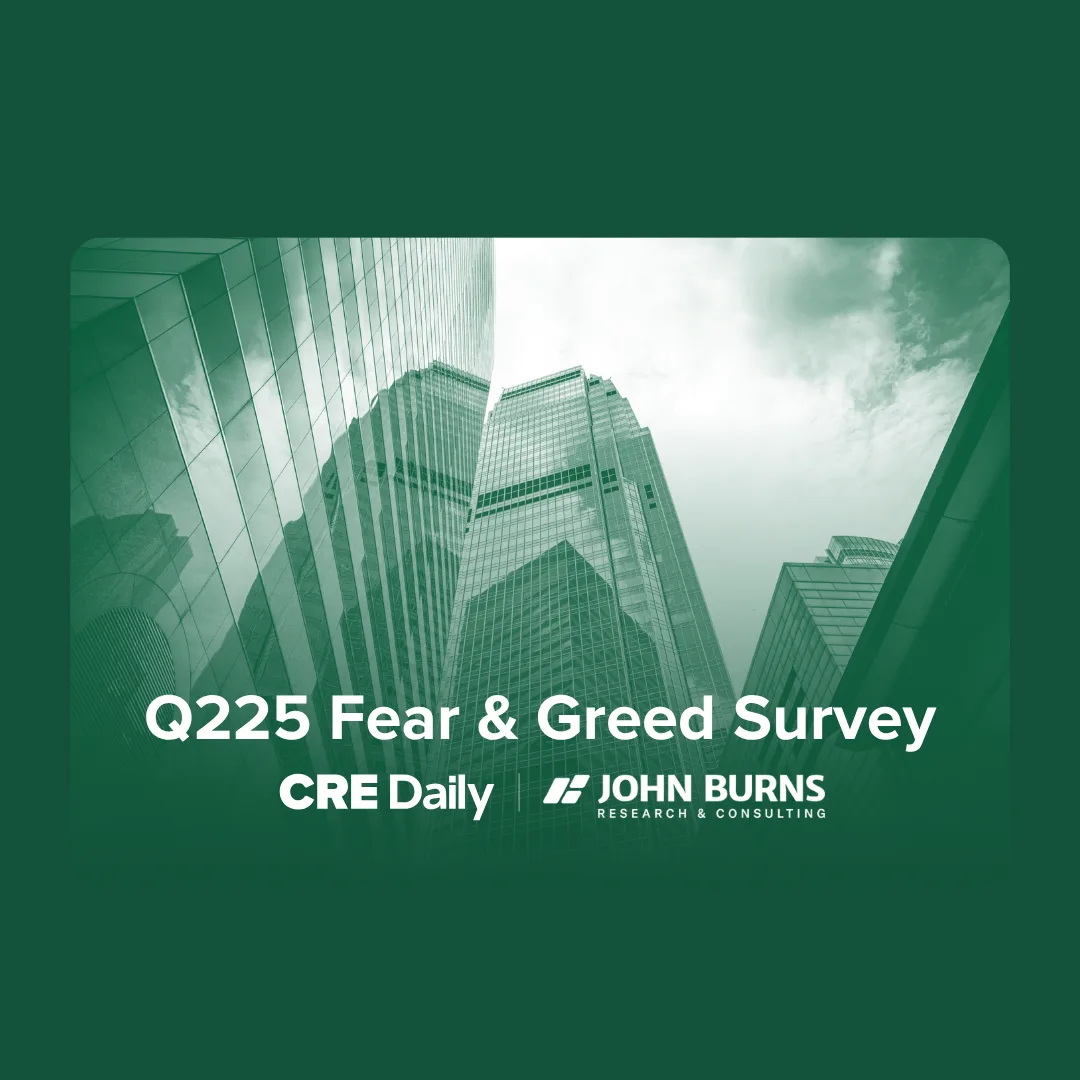
Q2 2025
The index ticked up slightly as capital access improved, though investors still face challenging financing conditions.
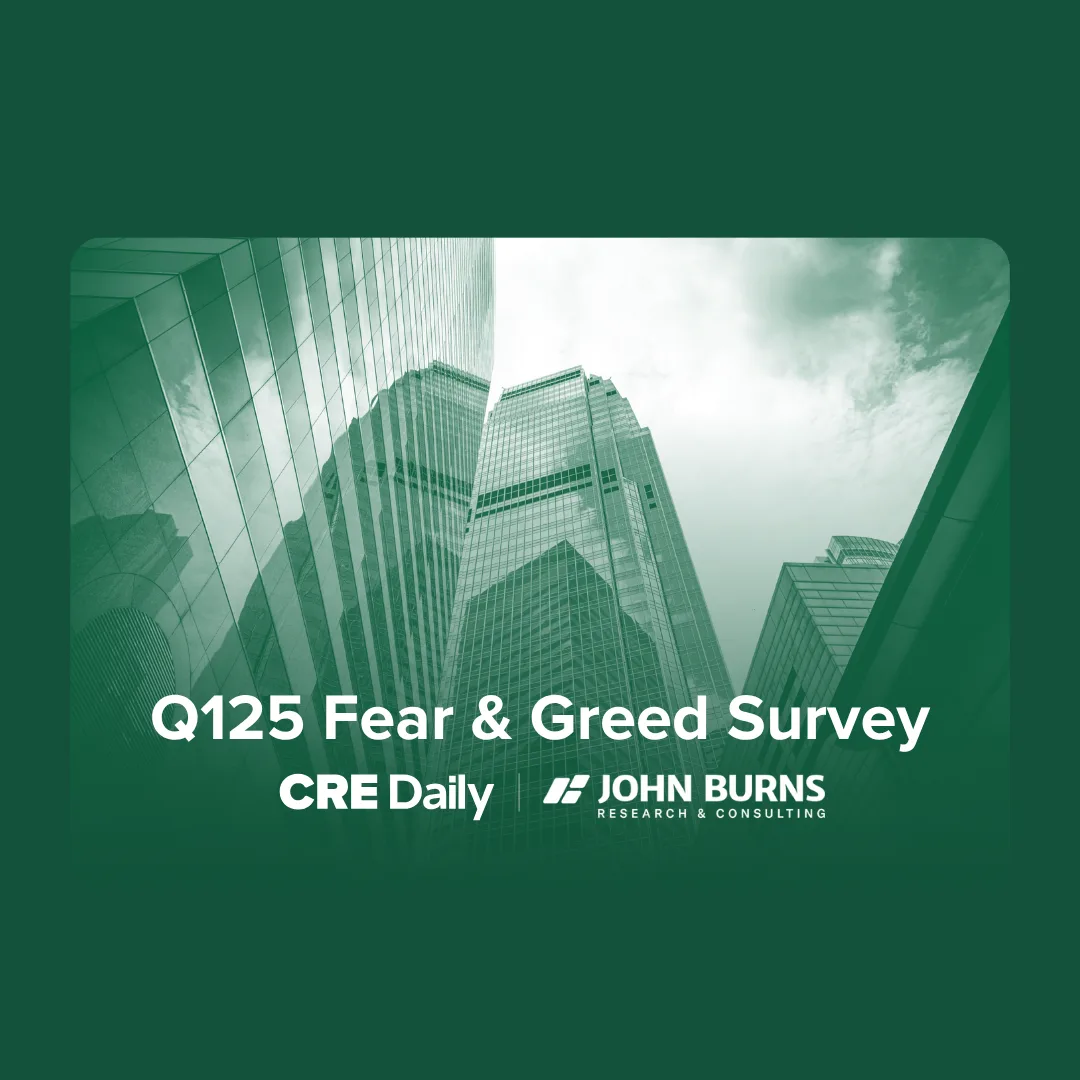
Q1 2025
Sentiment steadied as investors favored Industrial and Multifamily; Office lagged amid capital concerns.
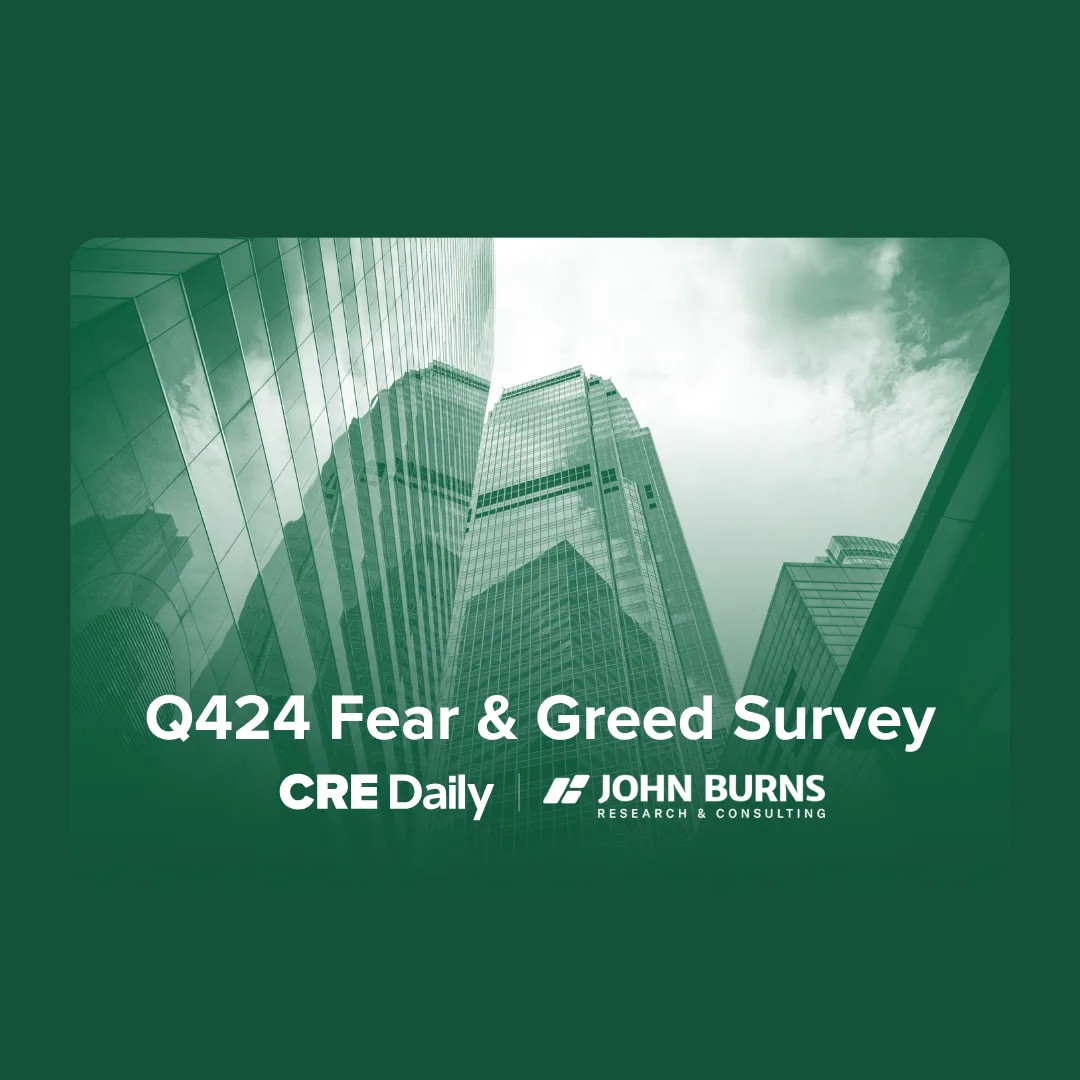
Q4 2024
Investor confidence improved slightly as Industrial and Retail sectors gained momentum; Office remained under pressure despite signs of stabilization.
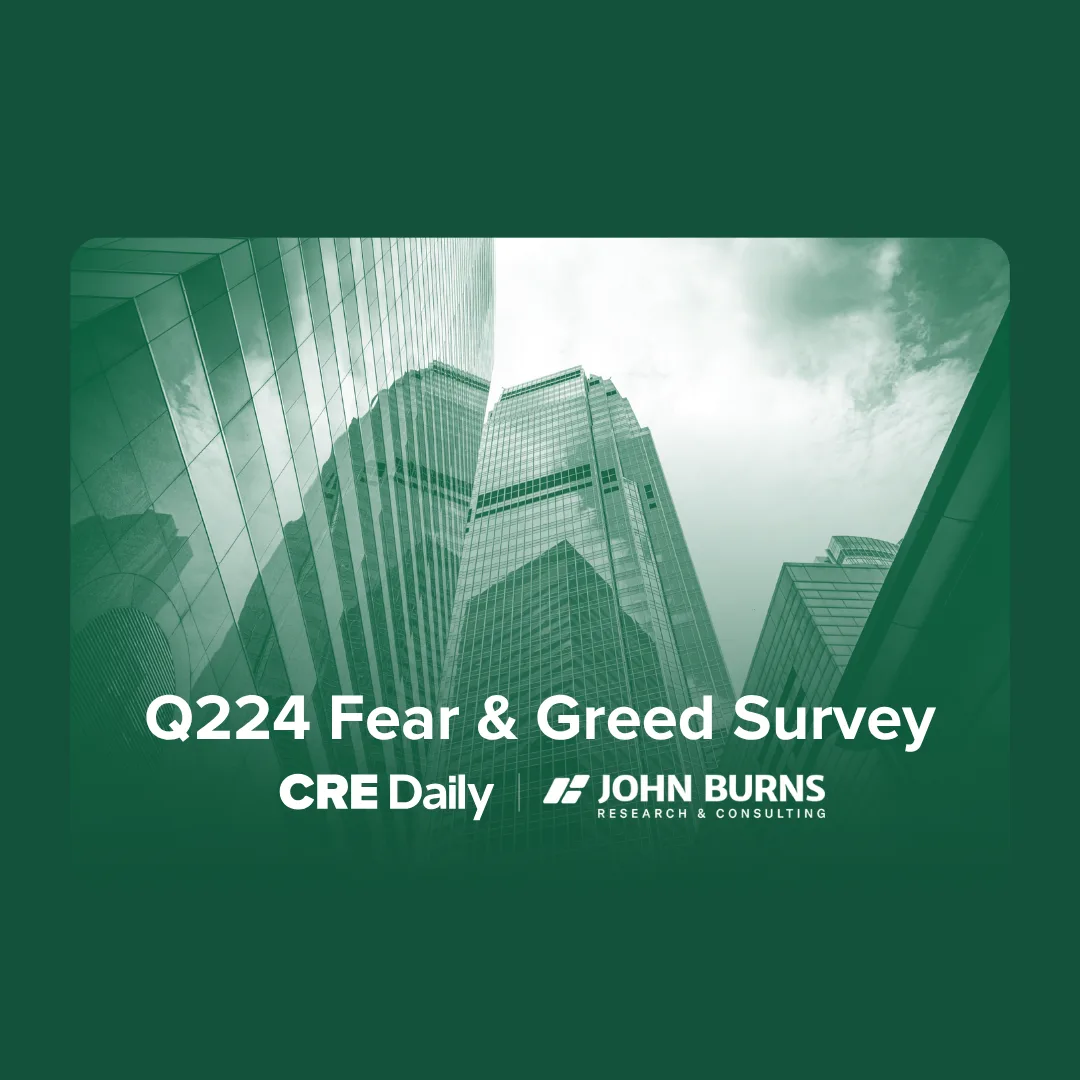
Q2 2024
Investor sentiment held steady as optimism grew in Multifamily and Industrial; Office remained weak despite early signs of stabilization.
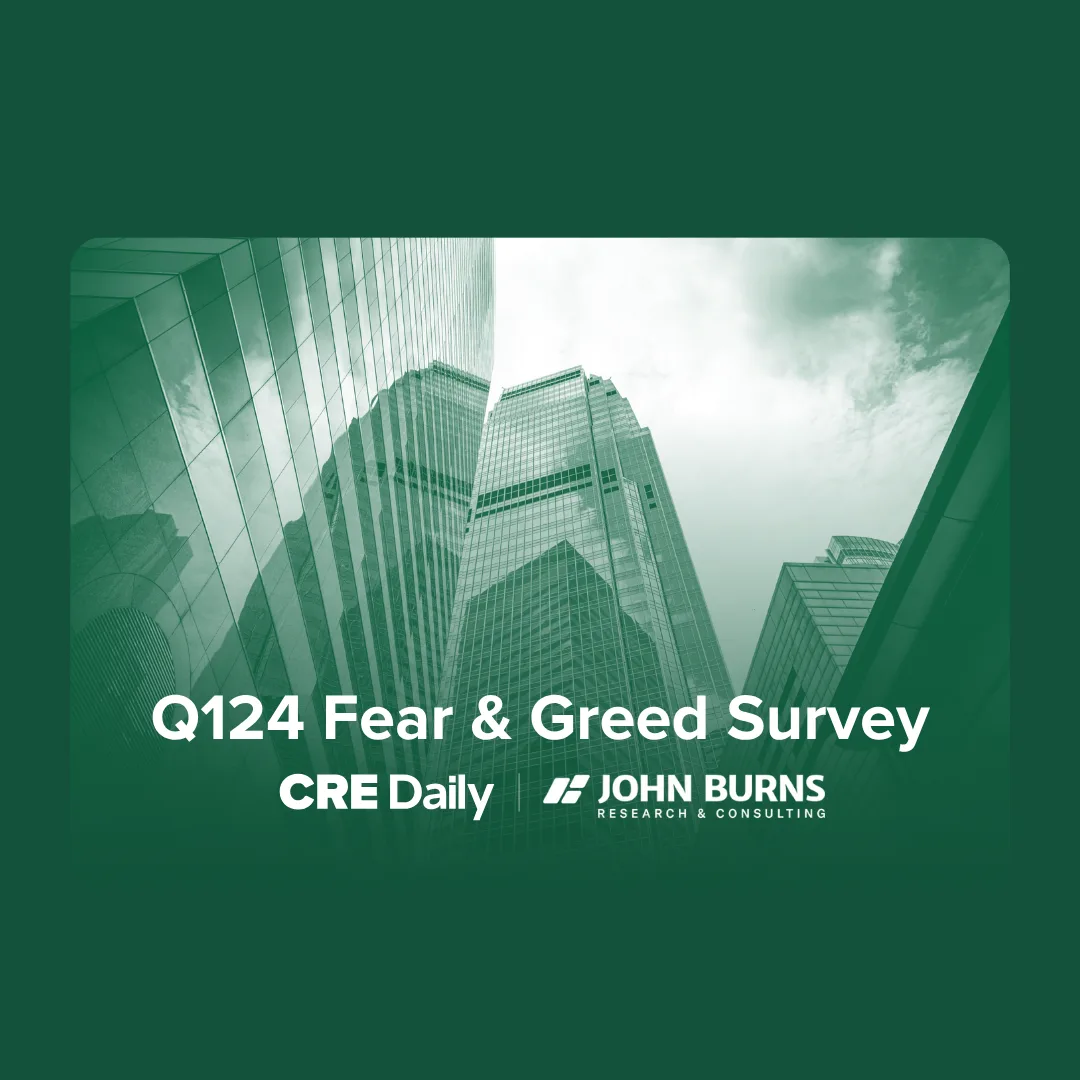
Q1 2024
Sentiment stayed balanced as investors held steady; optimism ticked up in Industrial and Retail while Office remained cautious amid tight credit.
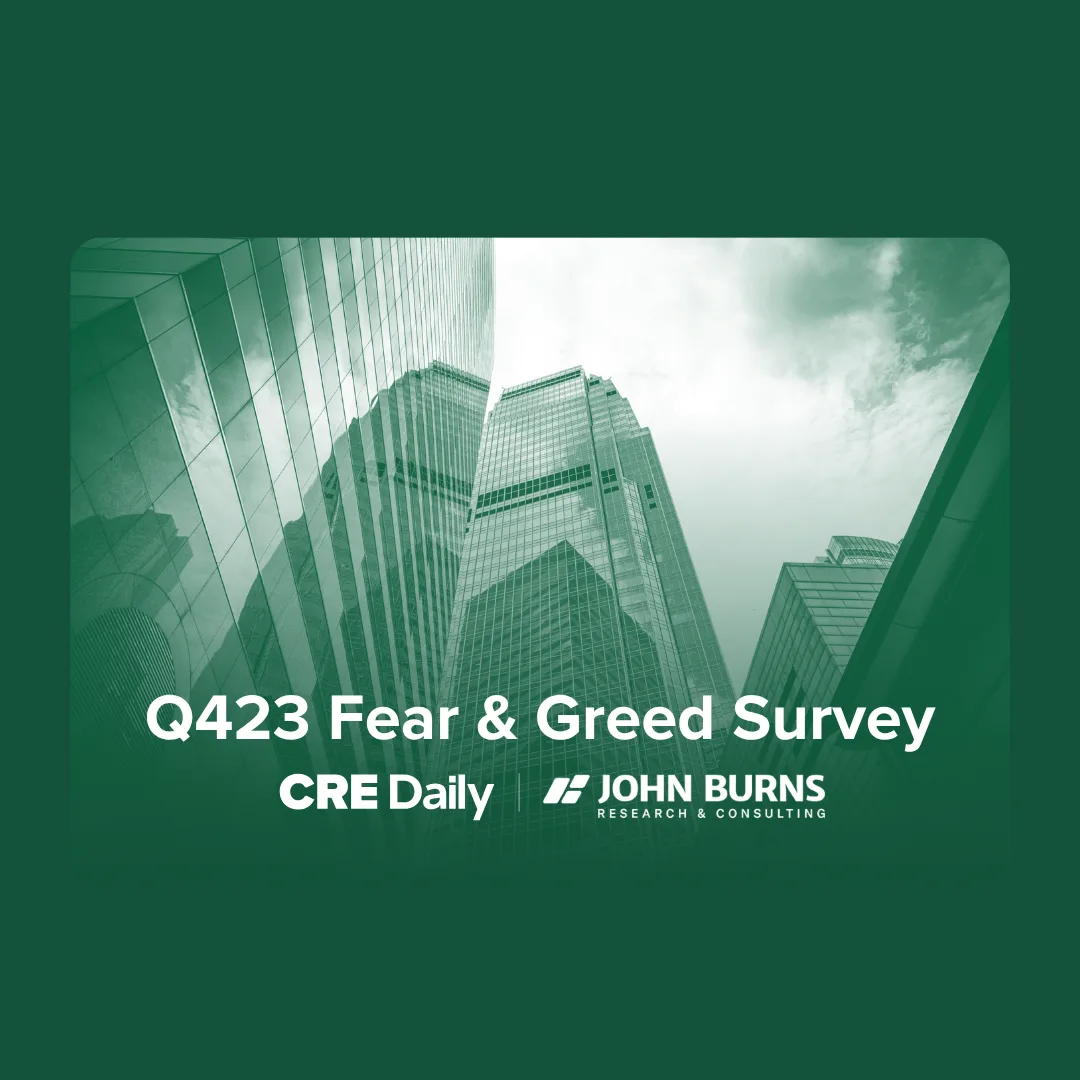
Q4 2023
Sentiment remained balanced as investors paused on new exposure; Industrial showed resilience while Office faced ongoing challenges and tightening capital access.
Methodology
What the index measures
The Fear and Greed Index gauges sentiment in the U.S. commercial real estate market by assessing whether investors are expanding or contracting their activity. It reflects trends in investment behavior, capital access, and overall market outlook across four major sectors: multifamily, industrial, retail, and office.
How it’s calculated
The index is a proprietary diffusion score ranging from 0 to 100. It’s derived from a weighted average of three sub-indices:
- Access to capital – whether it’s easier or harder to raise capital compared to the prior quarter
A score above 55 signals market expansion (greed), while below 45 signals contraction (fear). - Current investment strategy – whether investors are increasing, holding, or decreasing exposure
- Expected investment strategy – anticipated changes in the next 6 months
Who participates
The index reflects input from commercial real estate professionals across the U.S., including owner-operators, general partners (GPs), limited partners (LPs), and brokers. Participants represent a broad range of activity across the multifamily, industrial, retail, and office sectors.
Sample Details
Responses by segment:
Multifamily
38%
Industrial
19%
Retail
19%
Office
17%
Other
9%





